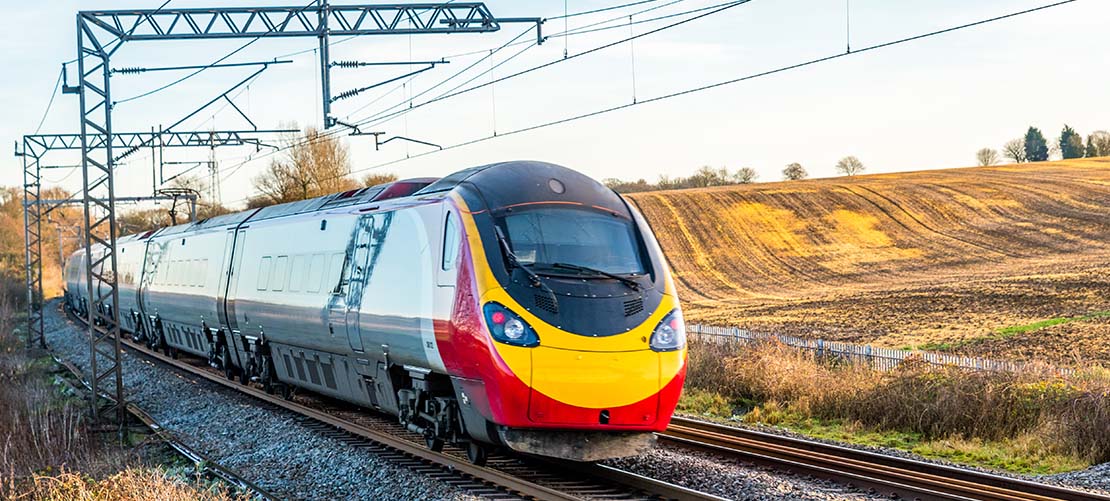Top table lunch: In conversation with Juergen Maier CBE – Top 10 takeaways

On Tuesday 9 July Stephenson Harwood and Atkins Réalis co-hosted the latest in a series of top table events. Juergen Maier, CBE, shared his thoughts around rail and urban transport, ahead of the publication of the conclusions of his review for the Labour Party on that topic.
As always, there was lively debate around the tables and a few unplanned diversions onto wider issues affecting today’s railway, in particular given the results of the recent election. And the answer to the questions like how ambitious should the rail industry be? How do we accelerate change? and more… Read below to find out.
If you have not already seen them, please also see here a link to our four briefing notes which take a deeper dive into some of the key themes coming from the Labour Party's Manifesto and Policy Paper.
1. Rail and Urban Transport Review: the Rail and Urban Transport Review is in final draft and will hopefully be concluded and published before the end of Q3 this year. The engagement with the rail industry and key stakeholders has been positive and comprehensive with a significant number of case studies and pieces of evidence submitted. Round table sessions have been held with stakeholders in order to gain their perspective. The intention is for the Review to form the basis for a reset of the UK rail and urban industry and engender some overall confidence in order to assist the new Government to set a new tone and direction for transport policy moving forward.
Lively discussion followed as potential ideas and input into the Review themes:
2. Ambition: how ambitious should the industry be? Very! We should frame transportation within the wider strategic policy aims of social mobility, economic growth and the decarbonisation agenda; and transport is key to delivering wider change across the economy. It fits into policy in a number of areas across the Government departments and the industry needs to find a way to feed into those policies and help to deliver the agenda of the new Government. Success can be measured in a number of ways, but increased ridership and capacity (for both passengers and freight), as well as more joined up thinking on transport across devolved regions can really shift the dial.
3. Confidence: the British public needs to care about public transport and have their confidence in its ability to deliver restored; likewise the supply chain needs to have confidence that there is an overall plan for rail and urban transport (and its place in the economy) so that they can plan their business with a degree of confidence. The idea of a ten-year plan for the industry is seen as a good way of bringing some certainty to the industry and a means of breaking the current thinking based on the five-year control periods, which is seen as encouraging renewal activities but discouraging longer term investment. However a ten-year plan may not be long enough for the industry more widely when it comes to 'big ticket' infrastructure investment and there should be bolder thinking when it comes to longer term economic need so that the industry has visibility of the broad aims, while at the same time there is a means of ensuring that such investment is actually brought to fruition quickly rather than remaining pie in the sky thinking.
4. Accelerating change – are there any quick wins?: there was general consensus in the room that whilst planning is key, it is unlikely that there will be a perfect plan and we need to find some ways in which change can happen quickly and provide momentum. Any overarching plan also needs a short-term action plan to get things done. The previous Government has been acting in "crisis mode" with a number of committees tasked to look at what needs to happen and when and the hope is that this will generate the quick wins in the first 100 days. Whilst there is a need for longer term planning, other "day to day" matters may also deliver benefits. One priority for the Government now that it is in office may be to resolve the current pay disputes within the rail industry as this will help to unlock passenger service improvements across many of the current operations. Stations are also another important area where some thinking with Government, but also passengers and local authorities could deliver some real benefits quickly. Also, as rail electrifies, there is a need to look to a wider national energy strategy in relation to electricity capacity, as the Grid will become increasing under strain for example with the massive growth in data centres for AI.
5. Leadership: policy needs to come from the Government but be delivered with leadership from the industry. With GBR expected to be implemented, there should be a stronger guiding mind for delivery and, ultimately, the head of GBR will be the person who is responsible and accountable for that delivery. However, we should not be precious about who leads and who delivers various initiatives – it just needs to get done. The ORR also has a leadership role in particular alongside and supporting devolution to the metro mayors – providing the industry overview and ensuring a joined-up system (also making sure that freight is protected).
6. Investment opportunities for the private sector: the UK rail industry is a complex and fragmented market when it comes to rolling stock and infrastructure procurement and the visibility of future opportunities remains opaque, which all makes it difficult to make investment decisions. It is hoped that centralising procurement decisions, including deciding on a more uniform set of technical requirements, will work to reduce bid and manufacturing/construction costs and in turn provide the certainty that manufacturers, contractors and the wider supply chain need to remain committed to the UK market; enabling them to determine resource and materials requirements so that they can plan for future needs.
7. Funding: there is an opportunity now to not just reset public opinion when it comes to public transportation but also to take the initiative and change attitudes within HM Treasury in order to release the funds needed to generate long term results by promoting the investment returns that come from putting infrastructure in place. There is also an opportunity for the UK to consider other European countries to see what lessons can be learnt from the operation of their railways and use this information to support its emerging strategy in this sector. It is vital that the industry is ambitious in this respect and avoids sinking into a victim mindset by embracing the changes that will be coming to the sector. A more nuanced approach in comparing rail and urban transport to other forms of transport (in particular how roads are funded and taxed) will also allow proper comparison and help to advise public funding decisions in the round. In relation to decarbonisation – there is a role for the industry in terms of getting people off the roads but also a need to look at accelerating electrification because there is a risk that as we move to EV for car and bus passengers and freight lorries, if rail electrification doesn't accelerate, rail may not look like a better decarb option than road transport.
8. Operations: the stated policy of the Labour Party is to broadly renationalise operation of passenger services as and when National Rail Contracts come to an end and it was felt that this was overall not likely to change, although a plan for how and when this would be implemented is key. It would be a missed opportunity not to also consider how the private sector can continue to be involved in delivering and de-risking operations – particularly as it is often the private sector, and its far-reaching experience, that is key to delivering innovation and passenger growth. It is important that the Government has early conversations with the private sector so that they can be incentivised to continue investing in the rail industry.
9. Devolution: transport works best when it is run and managed at a local level, but managed within a framework of an overall system to ensure that network benefits can be kept – this overall system could be achieved by the Mayors being joined up on their ambitions and plans. The Labour Government is due to set out an ambitious devolution agenda and delivery of transport locally is likely to be part of this, with more powers given to the metro mayors. The mayors should be allowed to influence how transport is delivered and (bearing in mind the point above on operations) should not be limited in the method in which for example they deliver operations. With local buses being franchised to the private sector, a local concession model should not be discounted. Rail and urban transport also needs to be joined up with the Government's plan for a big step up in house building. The Mayors and other devolved bodies are seen as a good way of linking up planning for where people will be living and how they get from A to B.
10. Harnessing the benefits: ultimately the success of the coming changes to the industry will be measured by improved passenger numbers, increased revenue and the more intangible improvement in general public opinion and reputation. A journey on the rail network should be immemorable insofar as it does what it says it will do – a GB railway that is seen as being capable of reliably running on time and offering a degree of comfort for a reasonable price should be seen as a success and the benefits will flow.




